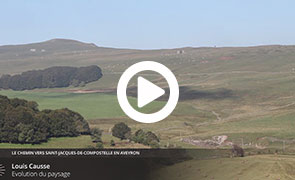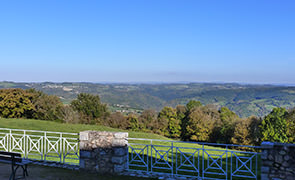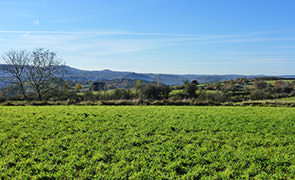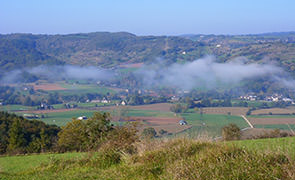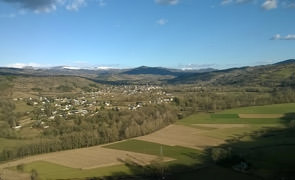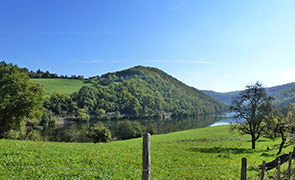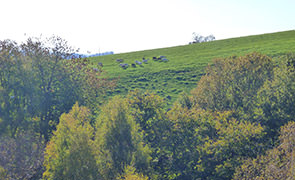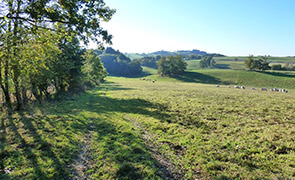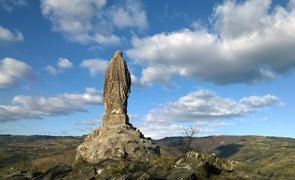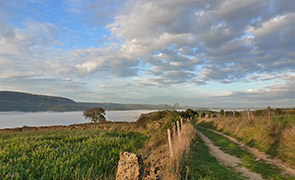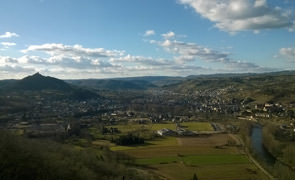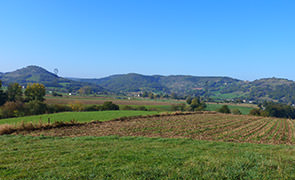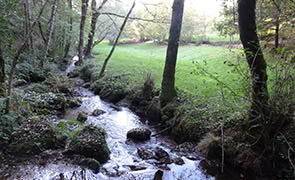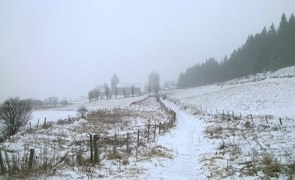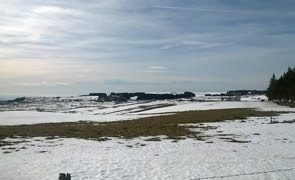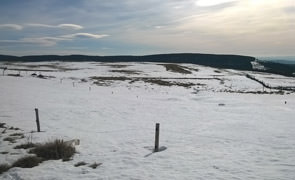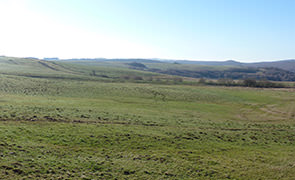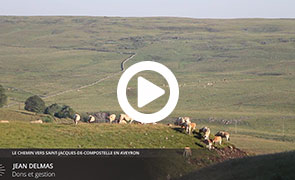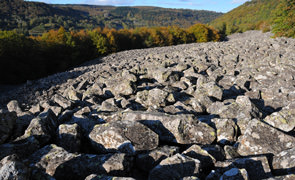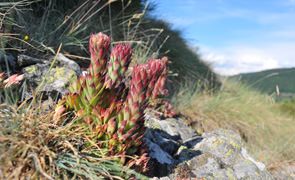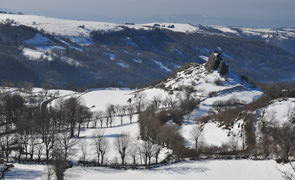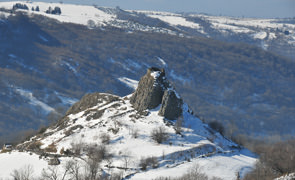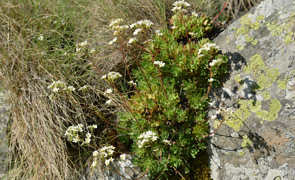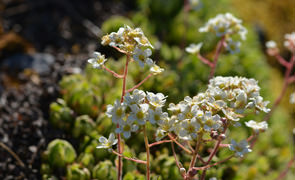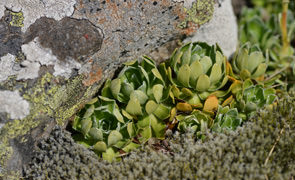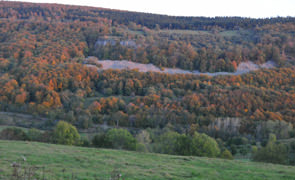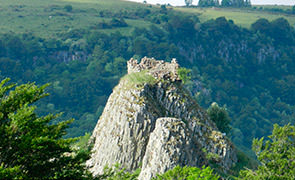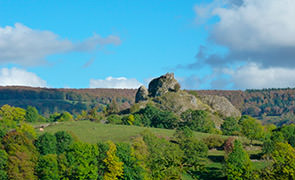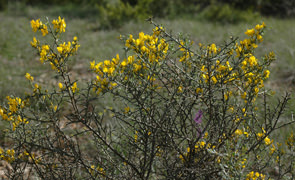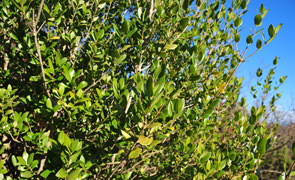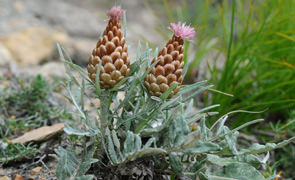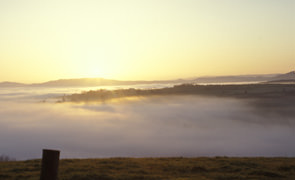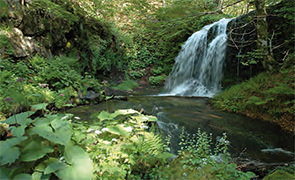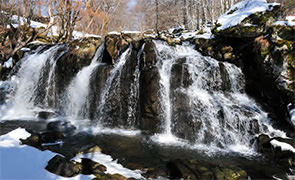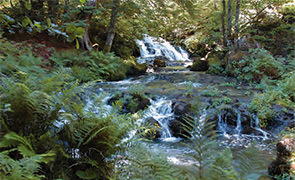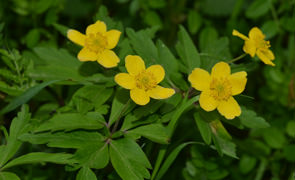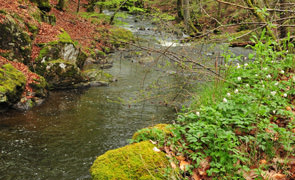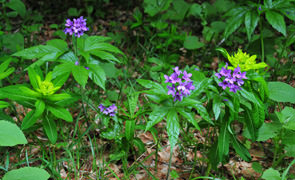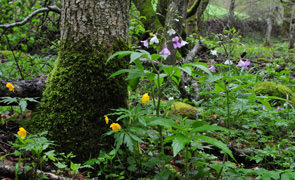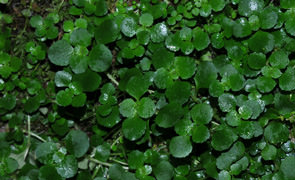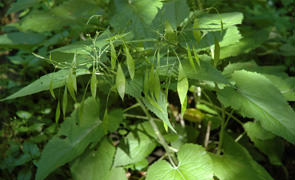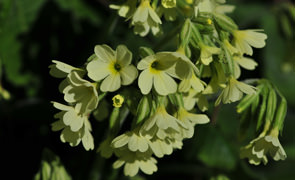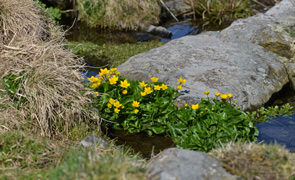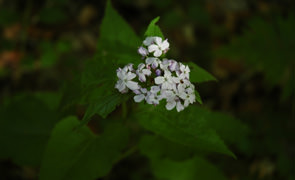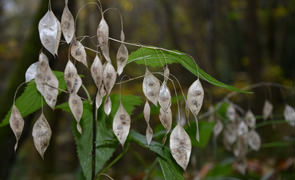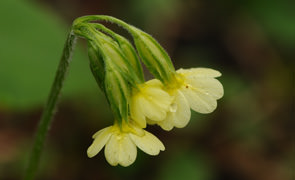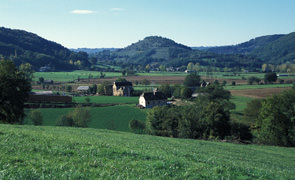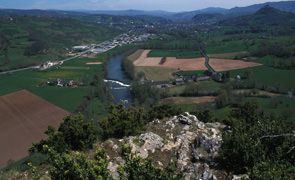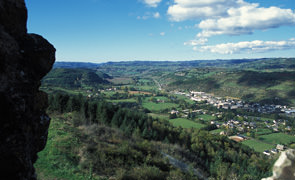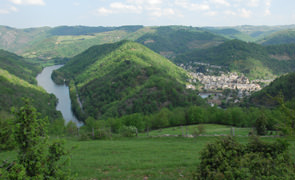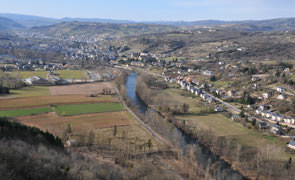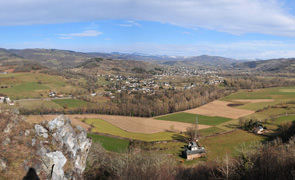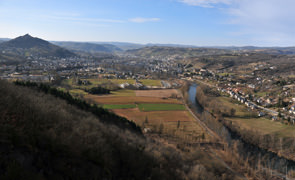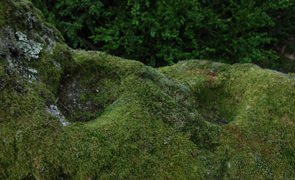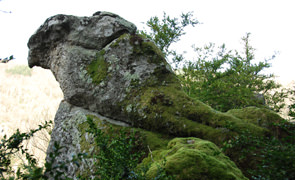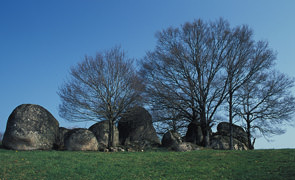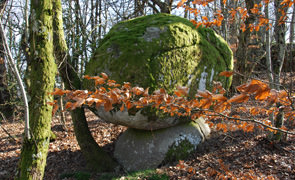This landscape gives us a very good idea of the rural economy that was alive up until the middle of the 20C and the trading carried out from the Middle Ages between the valley and the causses limestone plateaux in the south and the Aubrac, Carladez [Carladés] and Viadène [Viadena] plateaux to the north.
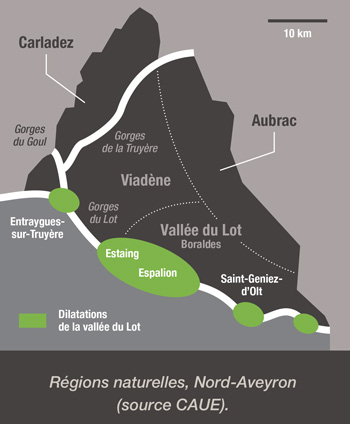
Aubrac – Viadène - Carladez
This scenery that is so typical of Aveyron, with its rounded high mountain pasture outline, dotted here and there with huge beech groves, forms an ellipse that is 20 km wide and 40 km long, lying at a height of 1200 metres and straddling three départements (Aveyron, Cantal and Lozère).
Bordered to the south by the Lot Valley, towards which it plunges with an incline of more than 1000 metres, the massif is mainly formed of basalt outpourings resting on the old Hercynian basement. Despite its modest altitude, the Aubrac has a distinctively mountain character. It is not surprising that the view of the bare vastness of the plateau, battered by the north wind, struck early pilgrims who told of “a place of horror and vast stretches of solitude”. We can imagine their relief at seeing the Lot Valley opening up before them, the Causse Comtal in the distance and their promise of food, wine and life.
To the west, Carladez (alt. 800-900 m) and Viadène (average alt. 750 m) form a triangle stretching from the foothills of the Aubrac to the Truyère gorges. These are hilly plateaux, made up of a patchwork of cultivated parcels of land, pastureland, copses and remote moors. This combination of landscapes still today gives us a very good idea of the rural economy that was alive up until the middle of the 20C and the trading carried out from the Middle Ages between the valley, the Causses and the Aubrac, Carladez [Carladés] and Viadène [Viadena] plateaux.
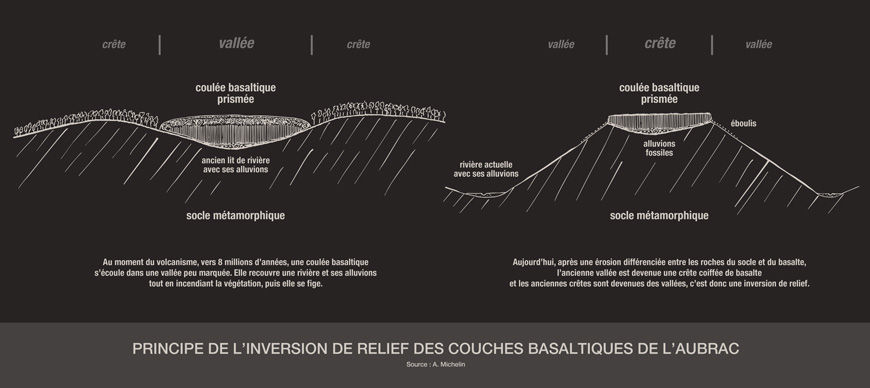
Valleys of the Lot and Dourdou
After kilometres of exertion, the walker leaves the slopes of the Aubrac foothills for an easier path, in the gentleness of the valley. As the altitude lowers, oak [garric] has permanently got the upper hand, on the southern slopes, over beech [fau] which occupies the northern sides right down into the valleys. The land is better for crop-growing: the hillsides facing due south are suited to wine growing and to woods on the north-facing side (oak groves on the limestone parts, chestnut groves on the red earth and schist) or used as rangeland (sparse land grazed by cattle). The Lot Valley structures the geographical layout of North Aveyron
For instance, housing is more dense, the valley is where most settlements are concentrated along with workers who would find takers at loues (hiring days) and for seasonal work - haymaking [fenar] on the Aubrac and harvesting [segar] on the causses. It was an essential communication route with traffic circulating along the valley, but also major passageways between the north and south (trade, transhumance of livestock).
Golinhac plateau
Today's landscape is the result of several combined actions: geological activity (type of rocks, erosion, climate), the time factor, vegetation dynamics and the far more modest, albeit very visible action of man.
This landscape is "recent". It has been formed by the entrenchment of rivers since the old tertiary paleosurface. We talk about rejuvenation of the Massif Central which, initially, was almost flat.
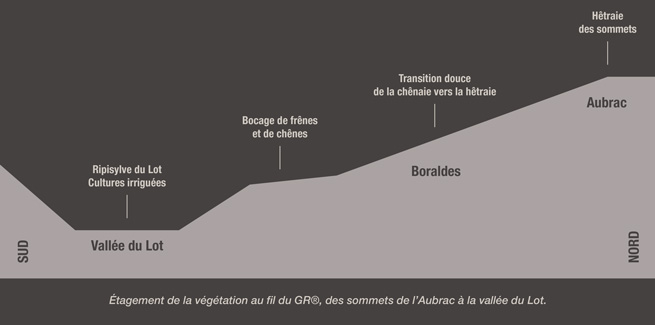
All the way along the GR®, on the plateau, you will find pebbles on the highland which are evidence of the river’s former course.
These steep slopes of the Lot valley were once farmed intensively. The south-facing aspects made the growing of vines and fruit trees possible. Honey, taken from hives cut into the trunks of chestnut trees [bornhons] or made of woven straw, was also produced.
As to the less fertile slopes, covered with brushwood, they were the preserve of goats. The sale of cabécous, small disc-shaped goat’s cheeses eaten after they had been dried for varying lengths of time, enabled the women to buy anything that was not produced on the farm. A few farms still carry on this tradition today.
